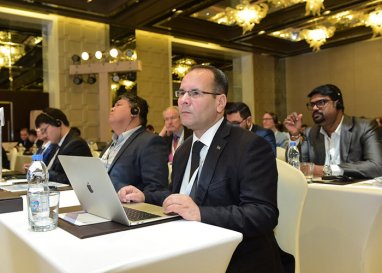
The editor-in-chief of the Nebit-Gaz newspaper, columnist and regular contributor to the information publication CentralAsia.news Ussa Ussaev shared his forecasts on the prospects for the development of the gas industry in Turkmenistan and assessed its current state.
The second largest gas field in the world, Galkynysh, is located on the territory of Turkmenistan, whose reserves are estimated at more than 26 trillion cubic meters of fuel.
China is currently the largest importer of Turkmen gas.More than 40 billion cubic meters of gas are supplied to the territory of the PRC through three lines of the Turkmenistan-Uzbekistan-Kazakhstan-China pipeline, put into operation in December 2009.
After the construction of the quadruple line is completed, the volume of Turkmen gas supplies to China will exceed 60 billion cubic meters.
In 2021, Turkmenistan fully repaid the 8 million loan received from China for the construction of the Turkmenistan-China gas pipeline and the development of the Galkynysh field.
Turkmen gas is also supplied to Russia (more than 5 billion cubic meters per year). Swap supplies to Azerbaijan are also carried out in the amount of more than 2 billion cubic meters. In addition, Turkmenistan has the technical capacity to supply natural gas to Iran.
Among the gas pipeline projects under implementation, the most relevant is the construction of the Turkmenistan-Afghanistan-Pakistan-India (TAPI) gas pipeline.The construction of the pipeline from Turkmenistan to India began in 2015; its total length is about 1,840 kilometers.
TAPI will pass through the cities of Herat and Kandahar in Afghanistan, the Pakistani cities of Quetta and Multan and will reach the settlement of Fazilka on the border of Pakistan and India.
The gas pipeline project has been approved by the world's largest gas suppliers (Russia, USA).
Turkmenistan also continues to study the prospects for natural gas supplies to European countries, including through the Trans-Caspian gas pipeline.One of the key vectors for the development of the Turkmen fuel and energy complex and attracting foreign investment is also the development of hydrocarbon deposits in the Turkmen sector of the Caspian Sea.
For many years, such well-known oil and gas companies as Dragon oil (UAE), Petronas (Malaysia), Eni (Italy) and others have been operating here on the basis of Production Sharing Agreements.
The Memorandum of Understanding between the Government of Turkmenistan and the Government of the Republic of Azerbaijan, signed in the winter of 2021, opens up new prospects for cooperation and the realization of the energy potential of the Caspian Sea.
The points of the Memorandum imply joint exploration, development and development of the resources of the Dostluk field in the Caspian Sea.According to industry experts, the development of Turkmen-Azerbaijani cooperation in the Caspian Sea can open a new era in the development of the energy resources of the Caspian region and can contribute to the start of Turkmen gas supplies to the European market.
The gas chemical industry, namely the construction of gas chemical complexes for the deep processing of natural gas and the production of chemical products, is a new trend in the development of gas resources in Turkmenistan.
In the future, this industry can become a key one in the country's economy.Enterprises for the production of urea fertilizers, polypropylene and high-density polyethylene, and synthetic gasoline from natural gas were put into operation in Turkmenistan.
Also, projects are being developed for new enterprises for the chemical processing of natural gas and the production of highly liquid goods on the world market.According to the Program for the Development of the Oil and Gas Industry of the country, by 2030 new gas chemical complexes will be built in Turkmenistan, including the production of isobutane, methanol, polyvinyl chloride, polyvinyl acetate.
Turkmenistan began to pay close attention to the transition to low-carbon energy sources.The prospects for establishing the production of hydrogen as a possible "fuel of the future" are being studied.
Recently, President Serdar Berdimuhamedov approved the Roadmap for the development of international cooperation aimed at studying the issue of Turkmenistan's accession to the Global Methane Commitment for 2023-2024.
The roadmap was adopted as part of the fulfillment of Turkmenistan's international obligations to protect the environment and the implementation of the points of the Paris Agreement to reduce greenhouse gas emissions.
